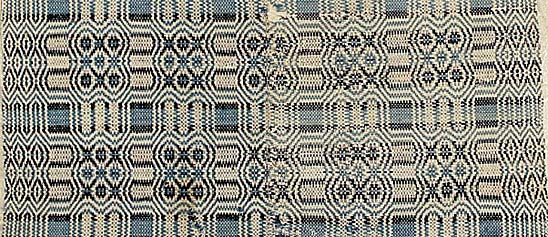
The 50,000 objects in the textile collections fall into two main categories: raw fibers, yarns, and fabrics, and machines, tools, and other textile technology. Shawls, coverlets, samplers, laces, linens, synthetics, and other fabrics are part of the first group, along with the 400 quilts in the National Quilt Collection. Some of the Museum's most popular artifacts, such as the Star-Spangled Banner and the gowns of the first ladies, have an obvious textile connection.
The machinery and tools include spinning wheels, sewing machines, thimbles, needlework tools, looms, and an invention that changed the course of American agriculture and society. A model of Eli Whitney's cotton gin, made by the inventor in the early 1800s, shows the workings of a machine that helped make cotton plantations profitable in the South and encouraged the spread of slavery.
Our collection database is a work in progress. We may update this record based on further research and review. Learn more about our approach to sharing our collection online.
If you would like to know how you can use content on this page, see the Smithsonian's Terms of Use. If you need to request an image for publication or other use, please visit Rights and Reproductions.